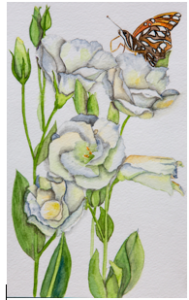To define them:
* Deductive reasoning is defined as logical process in which a conclusion is based on the concordance of multiple premises that are generally assumed to be true. This is sometimes referred to as top-down logic.
* Inductive reasoning is defined as reasoning in which the premises are viewed as supplying strong evidence for the truth of the conclusion. This is sometimes called bottom-up logic.
Philosophy plays a major role in the origins of both of these styles of reasoning. The history stretches back as far as to the iconic philosopher of ancient Greece, Aristotle.Although confusing, much thought has been dedicated to understanding these two concepts and their roles in our daily lives, as well as their neurological bases.
A flaw of inductive reasoning is that it does not guarantee for statements to be true, but it is the in the basis of much of human cognition. It is a matter of hypothesis selection based upon certain criteria of relevance. Inductive reasoning is oftentimes linked to heuristics and most definitely the Representative Heuristic, which is a heuristic that tempts one to us to judge something entirely off of how many features it has in common with something else. This can be very faulty and is definitely not necessarily true. In my own life, I very frequently fall for the lure of inductive reasoning and see that my judgment may have been valid, but certainly was not true, like in the case of when I tried to befriend someone many years ago that I felt sorry for. They struck me as friendly, but ended up being very horrible in the end and I have not spoken to them in years. Such is inductive reasoning – associating something with a characteristic or group because it appears to resemble them, but in truth it isn’t part of them.
There are different types of syllogisms that exist that are used to study reasoning. Such examples are categorical syllogisms and conditional syllogisms. Categorical syllogisms showcase premises and conclusions, demonstrating the correlations between categories, and making use of quantifiers such as “all,” “none,” or “some.” Contrasting, with conditional syllogisms, the first premise has the form “if/then.” Many people have a hard time understanding the difference between truth and validity. Just because something is valid does not make it true and just because something is true does not make it valid. These two things are often confused, being used interchangeably, when they are not truly mutual.
Rationality itself is a very complicated thing that few people truly understand. “Why is the sky blue?” some ask, but there are the overwhelming majority that just don’t care why it is blue, and there are some that will claim it is green. In terms of decision making, either deductive reasoning or inductive reasoning can be used. It is probably better to use deductive reasoning though. Cognitive psychologists have divided the decision making process into five tasks: Set or revise goals, gather information, make plans, structure the decision, and the final selection. This is a complex task, but can be aided with the use of utility theory. Expected utility theory refers to the hypothesis that if humans have the relevant information, we will make decisions in a rational way and will chose options that result in the maximum possible expected utility. Benefits and costs are also factors that determine our decision making.
In my own life, I have used both forms of reasoning many times. An example of using deductive reasoning would be when I began signing up for classes this summer. I took a physiology class due to a requirement in my major. Naturally, with it being a biology class,I assumed that it would be very hard. “All biology classes are hard. Physiology is a biology class. Therefore, it must be hard…” In this case, it was both valid and true, because yes, the CLASS IS VERY HARD!!!!!!
References
Wede, J. (2017) Lesson 14: Reasoning and Decision Making. Retrieved from Lecture Notes Online Web site:
Goldstein, B. Sensation and Perception. 1980.

